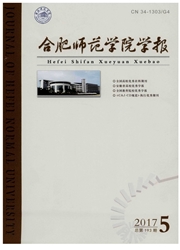

 中文摘要:
中文摘要:
《长城与运河》最大的抒情技巧是“意象抒情”,这是阅读教学设计的核心内容。围绕这一核心内容形成了四大板块教学内容与教学流程:第一板块研究本诗描写意象与蕴含情感,主要研究诗歌表层描写意象与深层情感,以及情感提炼方式,这是研究诗歌“说什么”以及解读方式;第二板块研究本诗意象抒情建构技巧,主要研究本诗的抒情技巧是意象抒情,以及这一抒情技巧的抒情效果、运用写作注意事项,这是研究诗歌“怎么说”以及解读方式;第三板块是拓展阅读,是运用第一、二板块文本深层意蕴解读方式与文本建构技巧解读鉴赏同类文本,既是运用这些知识与能力阅读文本,也是在同类文本阅读鉴赏中巩固知识;第四板块是迁移写作,是将第二板块中的文本建构技巧迁移运用于同类文本写作,它既是这一技巧的写作运用,同样也是在写作运用中巩固、深化这一技巧知识。
 英文摘要:
英文摘要:
The lyric technique in The Great Wall and the Grand Canal is imagery lyricism, which is the core content of the reading teaching. Based upon this content, the four teaching sections and teaching procedures are formulated. The first section is to study the images and emotions contained in the poem, focusing on the descriptive image from the surface, which is what the poem is about and the way of interpretation. The second section is to explore the construction techniques of imagery lyricism and lyric technique, which is how the poem is constructed. The third section is the extended reading, helping students apply the the skills learned in the first two sections to appreciate the similar text. The fourth section is the transfer in writing, in which students are expected to transfer the text construction techniques to the writing practice.
 同期刊论文项目
同期刊论文项目
 同项目期刊论文
同项目期刊论文
 期刊信息
期刊信息
